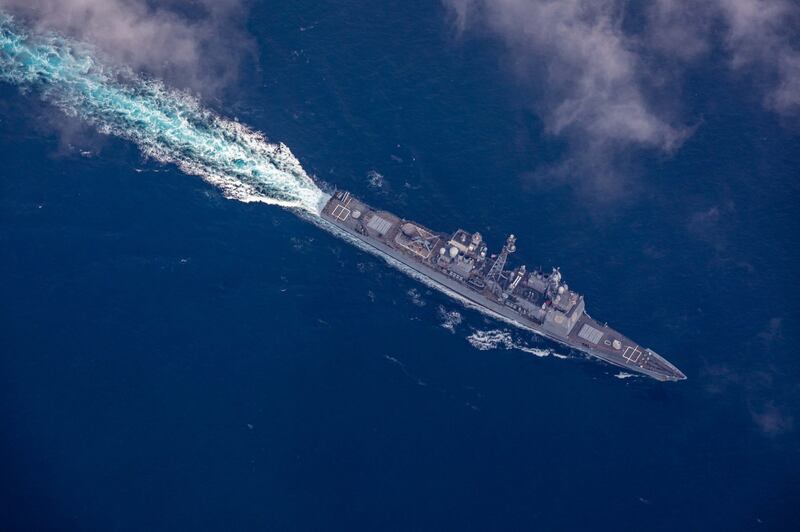The American military last year deployed three carrier strike groups, 20 bombers, and 12 nuclear attack submarines in the South China Sea as it apparently intensified its activities in the region, a new Chinese report found.
In its report, the South China Sea Probing Initiative (SCSPI), a Beijing think-tank, accused the United States of politicizing military operations “against China” in the disputed waters.
In 2022, such politicization was “further enhanced, with increased exposure to the Taiwan Strait transit operations, deployment of carrier strike groups, military exercises and drills,” said the publication titled “An Incomplete Report on U.S. Military Activities in the South China Sea in 2022.”
The U.S. military has yet to respond to the SCSPI’s findings.
A total of nine U.S. warships transited the Taiwan Strait last year, according to the report by the state-backed organization.
“Although the frequency decreased significantly compared with 12 in 2021 and 15 in 2020, the public profile and political significance of the transits have increased,” it said.
The U.S. has repeatedly said its armed forces are in international waters and “flies, sails and operates anywhere international law allows,” demonstrating its “commitment to a free and open Indo-Pacific.”
SCSPI noted a sharp increase in the “public hype and political manipulation” of such activities by the American military.

Twenty-eight members of the U.S. Congress, including the House Speaker, visited Taiwan in 2022 – the largest number since 2013.
“The U.S. legislators and politicians’ frequent visits to Taiwan have greatly stimulated regional tension,” the SCSPI report alleged, adding that deterring China “has become a strategic priority for the U.S. military in the Indo-Pacific.”
China considers Taiwan a Chinese province that should be reunited with the mailand, by force if necessary.
Reconnaissance operations
The report focused on what it called “high-intensity reconnaissance operations” by the U.S. military in the South China Sea.
Last year, the U.S. military sent about 1,000 sorties of large reconnaissance aircraft of various types to “monitor China’s forces and military facilities,” it alleged.
The number of sorties of electronic reconnaissance aircraft, including drones, increased significantly, reflecting that “the U.S. military was strengthening the battlefield construction and electronic countermeasures.”
The reconnaissance has been “increasingly bold and deliberately high-profile,” especially during China’s military drills.
In response to the visit by U.S. House Speaker Nancy Pelosi to Taipei in early August – the first by a U.S. house speaker in 25 years – Beijing staged a week-long live-fire exercise around Taiwan. During that time, the U.S. military sent out at least 22 sorties, including 14 large reconnaissance aircraft, the report said.
Chinese researchers also said that the U.S. military deployed four ocean surveillance ships with a total of 134 ship-days operating in the South China Sea last year.
Another three oceanographic survey vessels spent 205 ship-days doing seabed topography and geomorphology as well as marine meteorological and hydrological surveys, it said.
According to the Chinese research institute, those intelligence gathering activities aimed to support U.S. military patrols and drills, which increased in duration and intensity.
Three carrier strike groups and two amphibious-ready groups sailed through the South China Sea last year. On average, U.S. carrier strike groups stayed in the area for about 10 days, much longer than the four to five days in 2021, SCSPI reported.
“Increasing attention was paid to the Philippines’ Archipelagic Sea Lanes,” the report said, reflecting the U.S.-Philippines strategic ties.
In peacetime, conducting such highly-intensified military activities in a coastal state’s surrounding waters, is contrary to the spirit of the U.N. Charter and international law, it said.
“However, excessive deterrence and stimulations will provoke more determined countermeasures from China, and contribute to destabilizing action-reaction cycles,” warned Hu Bo, SCSPI’s director.
